Panasonic TH-65PZ800 65in Plasma TV Review
Panasonic TH-65PZ800 65in Plasma TV
Despite his bad back, John still manages to hoist this whopper onto his test bench. Let's hope it's worth it!
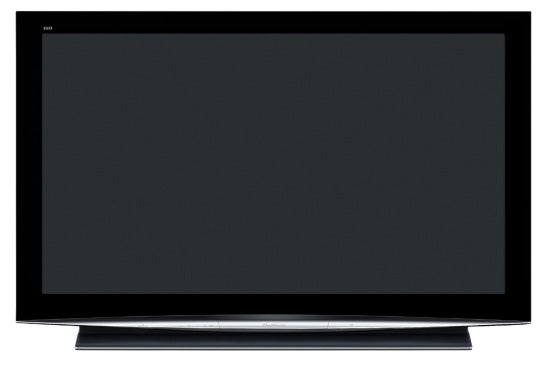
Verdict
Key Specifications
- Review Price: £3738.00
As I sit here chained to my PC in a darkened room for yet another day’s hard labour watching TV (!), it suddenly occurs to me that my back is ruddy killing me.
This is actually not all that surprising when you consider that a few hours ago I was involved in setting up a 65in plasma TV. Ouch. What is surprising, though, is that until a moment ago I’d actually forgotten about my aches and pains. Not because I’d dosed myself up on pain killers, but because I’d been so entranced by the awesome spectacle that 65in TV had been presenting me with. Especially once my nice new copy of Gears of War 2 somehow got involved…
The monster TV in question is Panasonic’s TH-65PZ800: the biggest proper TV Panasonic sells in the UK (though a 103in version is available ‘Stateside’, infeasibly enough). And man, is it a whopper.
Seriously, unless you’ve had a 65in TV in your living room, it’s hard to fully convey just how much such a vast screen dominates a room (unless you happen to live in a mansion). This isn’t a problem if you’re after a screen for a dedicated home cinema room, but living room users will probably wish its design was a bit more exciting. For essentially it’s just a football pitch of a screen surrounded by a very sturdy, really quite wide glassy black bezel that merely exaggerates the screen’s size.
There’s an attempt to add a dash of panache in the form of a silvery arc along the TV’s bottom edge. But this is so minimal in the context of such a large bit of kit that you barely notice it.
Strolling around to the TV’s rear (there’s no mere ‘peering round’ with a TV of this size!) reveals a pretty healthy set of connections. Kicking things off are four V1.3 HDMIs, complete with Deep Color and x.v. Colour compatibility. But among the other regular stuff there’s also a D-Sub PC interface, and an SD card slot capable of playing AVCHD video as well as JPEG stills.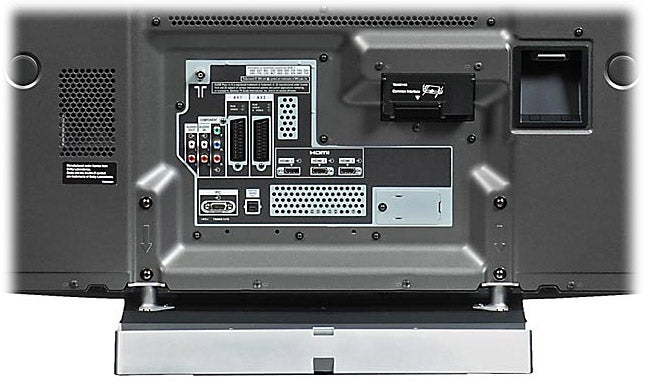
The 11th-generation Panasonic screen at the 65PZ800’s heart sports just the sort of specifications we love to find on our TVs. Its resolution is a Full HD 1,920 x 1,080, and its contrast ratio is quoted at a massive one million to one via dynamic contrast processing, or 30,000:1 native.
There’s plenty going on under the 65PZ800’s processing hood too. For starters you get Panasonic’s Intelligent Frame Creation, which interpolates extra frames of image data to fill in the blanks in a 50Hz source. This should radically reduce the slight motion juddering we’ve sometimes noted as one of the only truly significant weaknesses of some past Panasonic’s plasmas.
On a slightly similar note, the 65PZ800 also has 100Hz processing, and a 24p Real Cinema function that adjusts the frame rate interpolation to suit 24fps Blu-ray playback.
Then there’s Panasonic’s Digital Cinema Colour, a wide colour gamut system claiming to deliver 5,120 steps of gradation and cover 120% of the conventional HDTV colour standard. This allows the screen to approach the level of colour expression found in commercial Digital Cinemas – hence the feature’s name.
As usual with Panasonic’s top-flight sets, it’s not just the 65PZ800’s pictures that have plenty of high-spec feature support. The TV’s audio comes courtesy of Panasonic’s Smart Sound Speaker system, which uses separated tweeters and woofers to produce what I hope will be a cleaner, wider, more dynamic soundstage. There’s also SRS TruSurround XT processing to deliver a pseudo surround sound effect from just the TV’s onboard speakers.
It was as I kicked off my tests of the 65PZ800 with the sort of HD material such a huge, high-spec screen deserves – the Blu-ray of ”No Country For Old Men” – that the strained black I was moaning about earlier started to slip from my mind. For as soon as I clapped eyes on the shots in the desert where Moss finds the large group of dead bodies, I was well and truly lost in a pain-free home cinema wonderland.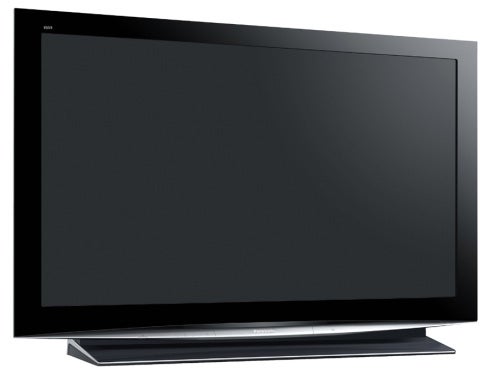
The 65PZ800’s picture really does seem to be firing on absolutely all cylinders. Fine detail levels, for instance, are extraordinary. We’ve always maintained that the impact of HD pictures expands in direct proportion with the size of screen you’re watching. Yet even knowing this scarcely prepared me for the way the 65PZ800 picks out details right down to the individual pixel level – even during scenes with lots of motion – with a clarity and accuracy that’s truly mesmerising.
What’s more, this extraordinary clarity does not come accompanied by grain or overstressed edges as we sometimes find with very detailed plasma pictures. In fact, the 65PZ800’s HD pictures are notable for their purity and freedom from any kind of overt noise, at least if you’re sat a sensible distance from the screen.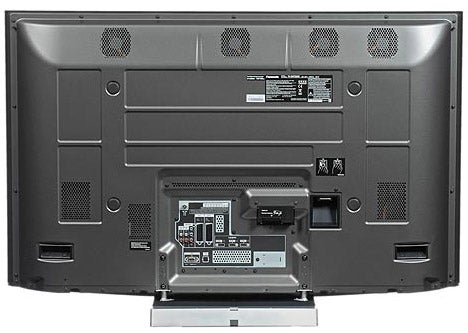
We make this viewing distance observation because if you stick your head up close to the screen you can see subtle pixel ‘buzzing’, particularly in dark areas. But the 65PZ800 keeps this common plasma issue so well reined in that you’re hardly ever troubled by it under sensible viewing conditions.
The next aspect of the 65PZ800’s pictures to impress is their black level response. Panasonic plasmas have long excelled in this area, easily staying ahead of the rest of the flat TV pack until those naughty Pioneer kids came along with their fancy KURO technology. But the profundity and naturalism of the 65PZ800’s black levels goes way beyond anything Panasonic has achieved before on such a huge screen. 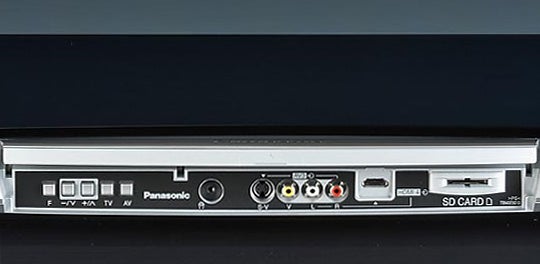
There’s practically no greyness in dark scenes at all unless it’s there in the source, for instance. Also shadow detailing is outstanding, giving dark scenes a terrific sense of scale; and there’s practically zero of that vague green toning that characterised plasma technology for so long. It was while dedicating myself to logging and exploring every element of the 65PZ800’s black level prowess that I got embroiled in the Gears of War 2 session I mentioned at the start of the review… It’s a tough job, but somebody etc etc.
Mentioning the absence of any underlying green during dark scenes back there brings me neatly into an examination of the 65PZ800’s colours. And again the news is very good indeed.
Its Wide Colour Gamut technology raises the set’s colour game to a level way beyond anything seen on previous king-sized Panasonic plasmas. Skin tones generally look totally believable during ”No Country For Old Men”, with hardly any trace of either plasma’s old colour striping or orangey undertone issues. Rich reds largely avoid the orange toning problem, too, and the 65PZ800’s portrayal of background walls and shiny objects is a revelation, as immaculate colour tone shifts give such material a terrific sense of solidity.
After witnessing so much HD quality, it was with some trepidation that I turned to a few standard definition sources. After all, a 65in screen is always going to be fairly merciless at revealing standard def inadequacies.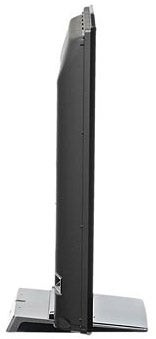
But actually, provided your standard definition source is of at least a decent quality, the 65PZ800’s video processors handle it remarkably well. The ”Sky News” studio, for instance, looks much sharper and less noise-ridden than we’d expect, while good quality DVDs sometimes looked good enough to fool people who’ve never watched a Blu-ray into thinking they’re actually watching HD.
It’s only with the very grubbiest sources – The Crime and Investigation Channel, Dave and so on – that the 65PZ800 falls down. With these ropey efforts pictures can be left looking soft and fuzzy, as the TV’s processing just can’t quite get a handle on what it needs to do where.
It’s really tough to come up with anything seriously negative to say about the 65PZ800, though. If pushed I might point out that the screen struggles to show a really convincing peak white, tending to look a touch yellowy when it tries – at least when you’ve got the picture settings optimised for video playback. 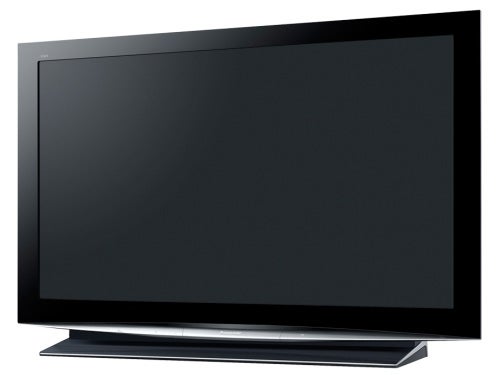
Also, I’d recommend using the Intelligent Frame Creation system sparingly, for it can cause edges to flicker and shimmer a little during action scenes or sporting events. In fact, I personally left it turned off all the time, as the TV’s pictures didn’t really seem to need its help anyway. Finally one or two skin tones look fractionally patchy – but these moments are very rare.
Hopes that I might be able to retrieve some sort of cynical critical credibility with the 65PZ800’s audio, meanwhile, are sadly dashed after just a few seconds of the beach landings sequence of ”Saving Private Ryan”. For in fact the Smart Sound Speakers deliver a dynamic range and size of soundstage that wouldn’t sound out of place on a decent separates system. Certainly they do more than enough to provide a suitably grandiose accompaniment to the vast and wonderful pictures.
”’Verdict”’
As you can probably tell by now, I’ve pretty much fallen for the 65PZ800 hook, line and sinker. It delivers a performance only a little less vibrant and tonally precise than that of Pioneer’s PDP-LX6090, while also being 5in bigger and not far off a grand cheaper once you’ve taken speakers into account.
I’m not saying it’s better than the Pioneer. But it gets startlingly close while costing less than I’d thought possible, and you can’t say fairer than that. Now where did I put that Deep Heat?
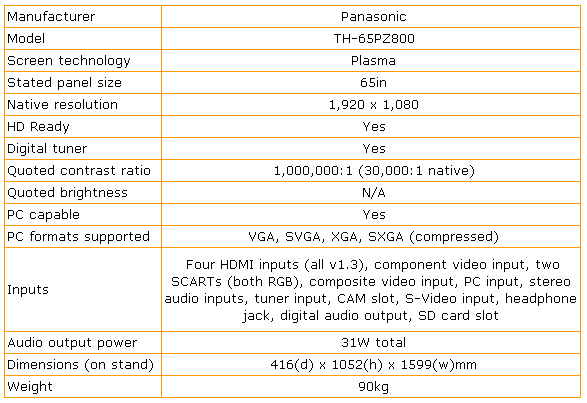
How we test televisions
We test every TV we review thoroughly over an extended period of time. We use industry standard tests to compare features properly. We’ll always tell you what we find. We never, ever, accept money to review a product.
Trusted Score
Score in detail
-
Features 9
-
Value 9
-
Image Quality 9
-
Design 7
-
Sound Quality 9

